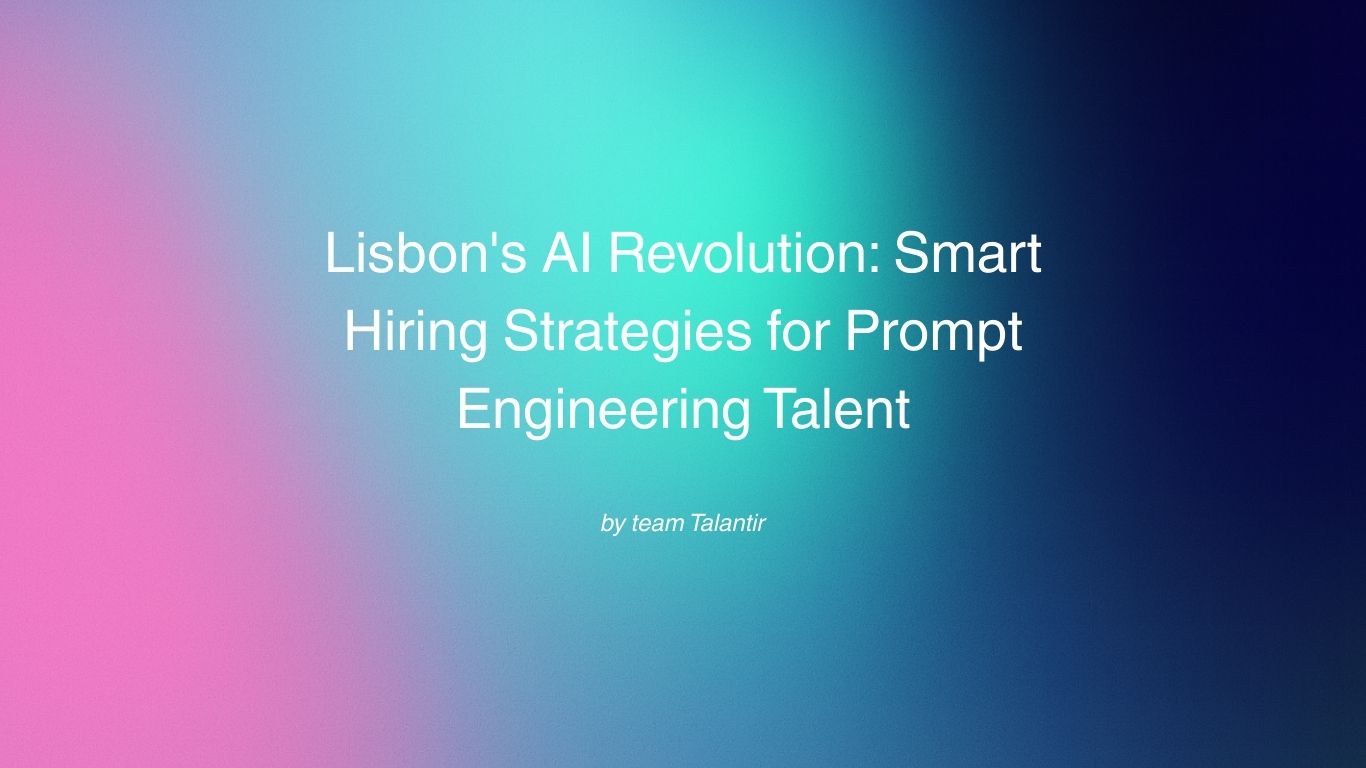Introduction: Why Entry-Level AI Hiring Feels Broken
Portugal’s tech scene is booming—growing steadily in 2025, with employers increasingly seeking skills like Python, AI/ML, and prompt engineering. Yet early-career opportunities for AI Prompt Engineers remain scarce.
At the same time, hiring cycles are slowing. In Portugal, it now takes on average 30–35 days to fill tech roles. This is a poor fit for an industry where projects evolve weekly and companies need to adapt quickly. Students, meanwhile, grow frustrated by lengthy processes that often end in silence.
Universities are racing to integrate AI-focused content into computer science and linguistics courses. But keeping pace with emerging practices—like fine-tuning large language models or designing complex prompt chains—is difficult in an academic setting.
The result is systemic friction: graduates sending countless applications with little feedback, employers overloaded with weak signals, and universities struggling to align with a fast-changing field.
At Talantir, we believe the answer is straightforward: evaluate real capability through practical work samples, not just resumes.
Current Frictions in Early-Career AI Prompt Engineer Hiring
Application Volume
Entry-level AI jobs attract high numbers of applicants. Many resumes repeat keywords like “LLM” or “prompt engineering,” but don’t reflect whether candidates can apply these skills. Promising applicants are lost in the noise.
Time to Hire
Hiring for tech roles in Portugal averages 30–35 days. For employers, this slows innovation; for students, it creates stress and uncertainty. In a field moving as quickly as AI, waiting weeks for decisions undermines momentum.
Skills Mismatch
Employers increasingly want graduates with applied skills in prompt design, iteration, and evaluation. Many students, however, graduate with theory-heavy knowledge and little exposure to tools like prompt chaining or retrieval-augmented generation. This gap discourages both sides.
Poor Signal Quality
Resumes don’t reveal who can craft prompts that minimize bias or hallucination. Interviews may test general knowledge but rarely show how candidates handle practical scenarios. Employers end up making hiring decisions without strong evidence.
Assessment Drift
Some companies use abstract coding puzzles or generic aptitude tests. These exercises may filter candidates, but they don’t reflect day-one responsibilities of a Prompt Engineer—like refining prompts, documenting logic, and evaluating outputs.
Why AI Prompt Engineer Roles Are Hard to Evaluate
Prompt engineering is difficult to assess because of:
- Hybrid skill requirements: Strong coding ability, linguistic awareness, and creative thinking. Few graduates bring all three.
- Constantly evolving tools: What’s best practice today may be outdated next semester.
- Unclear role definitions: “Prompt Engineer,” “LLM Specialist,” or “AI Developer” can mean very different things across companies.
- High stakes: Poorly designed prompts can produce biased outputs or compliance issues. This makes employers cautious about entry-level hires.
Because of these challenges, companies often lean on proxies such as university reputation or certifications, rather than proven capability.
The Alternative: Work-Sample Evaluation
Instead of guessing, employers can use short, realistic tasks that simulate day-one work.
For AI Prompt Engineers, such tasks might include:
- Writing prompts for structured business responses
- Iterating prompts to reduce hallucinations
- Explaining prompt logic in plain English for stakeholders
- Testing prompts across contexts to ensure consistency
These tasks, completed in 30–90 minutes, give far sharper insights than a CV.
Benefits:
- Students gain fair opportunities to show real skills.
- Employers see evidence of problem-solving and creativity.
- Universities can adapt curricula around industry-relevant scenarios.
Work-sample evaluation is widely recognized as a strong predictor of job performance. In AI roles, where applied ability is everything, it provides immediate value.
Talantir’s Perspective: Capability-First for AI Roles
Talantir is built around a capability-first readiness and hiring model. Students progress through structured roadmaps simulating real work, then move into challenges aligned with employer needs.
For Prompt Engineers, this could mean:
- Roadmap cases: designing prompts, testing model outputs, documenting changes.
- Milestones: projects that combine technical and linguistic skills, like building prompt workflows and reducing bias.
- Challenges: employer-aligned tasks such as refining customer-support flows or developing prompt libraries.
For students, Talantir builds clarity and portfolios of evidence.
For employers, it replaces hundreds of resumes with deep profiles showing how candidates approached tasks.
For universities, it integrates seamlessly into curricula, providing analytics on employability and skill readiness.
By grounding readiness in real work rather than proxies, Talantir helps all sides—students, employers, and educators—make better hiring decisions.
Conclusion: What If We Evaluated Real Work, Not Promises?
The early-career hiring market for AI Prompt Engineers in Portugal faces friction: oversubscribed vacancies, long timelines, mismatched skills, and weak hiring signals. Traditional methods fail to capture what matters most: whether graduates can write, test, and refine prompts that work in practice.
Work-sample evaluation offers a reset. By focusing on authentic, manageable tasks, employers gain stronger signals, students earn fairer opportunities, and universities bridge theory with practice.
What if we evaluated real work, not promises? That’s the reset Talantir puts at the heart of AI hiring.
Explore how work-sample evaluation can reset early-career hiring standards.
